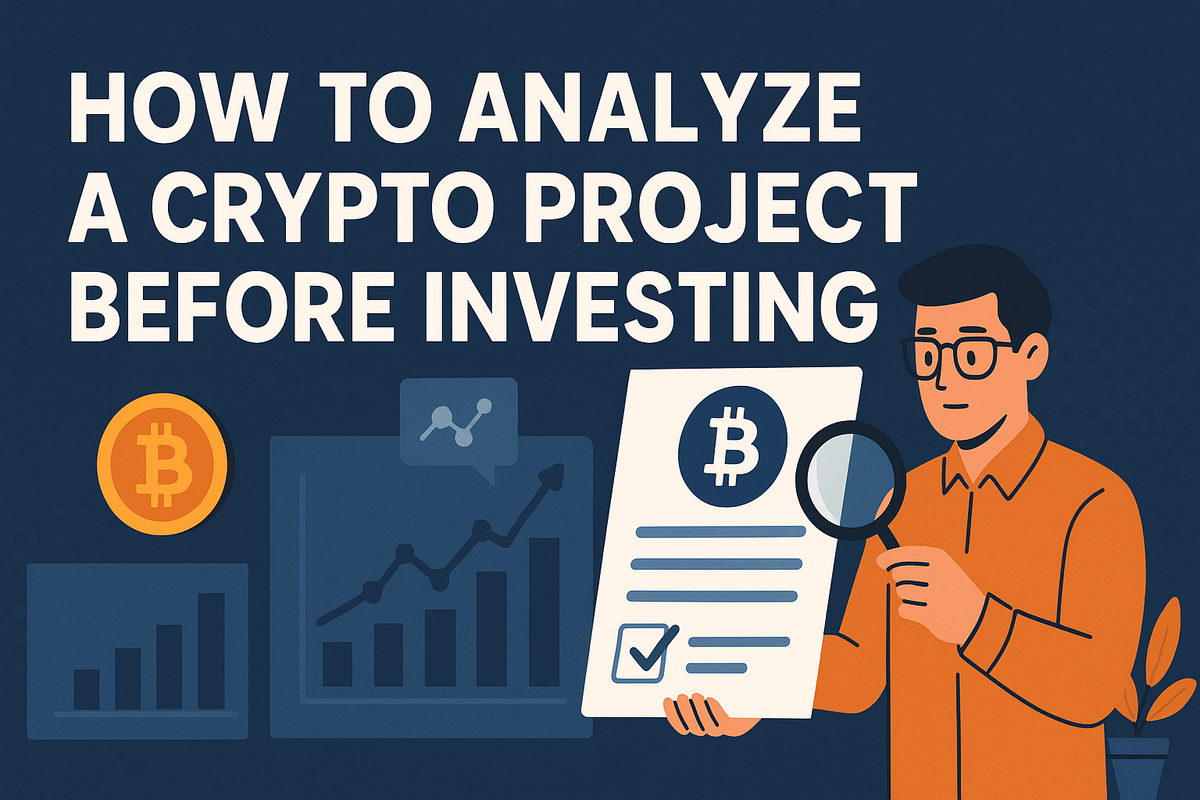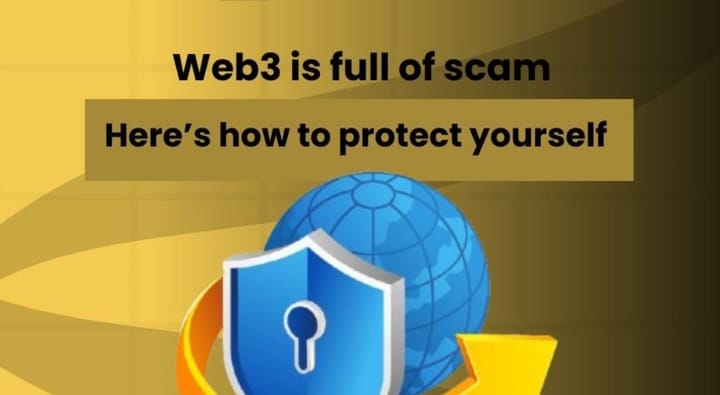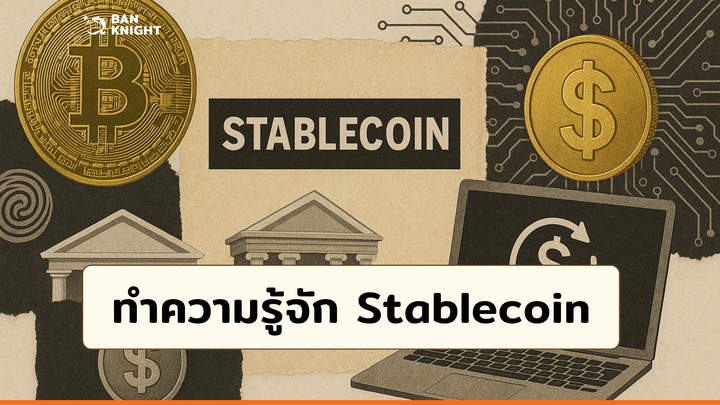How to Analyze a Crypto Project Before Investing

Introduction
Cryptocurrencies have evolved from niche tech experiments to multi-billion-dollar ecosystems. With thousands of projects in the space, knowing how to evaluate a crypto project before investing is not just useful, it’s essential. Many investors have been burned by hype-driven ventures that offered no real value. Whether you’re a beginner or a seasoned crypto enthusiast, this guide breaks down the key factors you should consider before putting your money into a cryptocurrency project.
1. Understand the Problem It Solves
Before diving into tokenomics or roadmaps, ask: What problem does this project aim to solve? A legitimate crypto project should provide a clear, compelling solution to a real-world problem. Projects like Ethereum addressed the limitations of Bitcoin by enabling programmable smart contracts. Chainlink solved data trust issues through decentralized oracles.
If the project is vague, trying to “revolutionize finance” without clarity on how, be cautious. Strong projects usually articulate their value proposition clearly in their whitepaper and website.
2. Read the Whitepaper (or Litepaper)
A whitepaper is the project’s foundational document. It typically includes:
- Overview of the project
- Problem and solution
- Technology and architecture
- Tokenomics (token usage and supply details)
- Roadmap and future goals
- Team background
While technical, it’s worth reading even a simplified version (a “litepaper”). Red flags include:
- Plagiarized or vague content
- Lack of clear utility for the token
- Unreasonable promises (e.g., “guaranteed returns”)
3. Examine the Team and Advisors
Behind every crypto project is a team. A project with a strong, transparent, and experienced team inspires confidence. Check for:
- LinkedIn or public profiles: Are they real people with relevant experience?
- Previous successes (or failures) in blockchain or tech
- Reputation in the crypto community
Watch out for anonymous teams (unless the project is structured to operate fully trustlessly, like Bitcoin) and unverifiable backgrounds.
4. Evaluate the Tokenomics
Tokenomics refers to how a project’s tokens are created, distributed, and used within its ecosystem. Key things to assess:
- Total and circulating supply: High inflation can reduce long-term value.
- Utility: What is the token used for? (Governance, fees, staking, etc.)
- Distribution: How much is allocated to the team, investors, community, and treasury?
- Vesting schedules: Prevents team and investors from dumping tokens immediately after launch.
A well-structured token economy incentivizes long-term participation and discourages pump-and-dump behavior.
5. Review the Roadmap and Development Progress
A clear roadmap gives you insight into a project’s direction. But more importantly, check if the team is meeting its milestones:
- Is the project live or still in development?
- Is the GitHub or code repository active?
- Have audits been conducted on smart contracts?
Inactive development, missed milestones, or lack of transparency around progress are warning signs.
6. Community and Ecosystem Strength
Community is a critical indicator of a project’s potential longevity. Look at:
- Engagement on Twitter, Discord, Telegram, Reddit, is the community active and constructive?
- Number of developers contributing to the ecosystem
- Partnerships or integrations with other projects
Fake followers or spammy groups suggest an artificially inflated image. Organic, growing communities are a sign of real interest.
7. Security and Audits
Security is paramount, especially for DeFi or smart contract-based projects. Ask:
- Have smart contracts been audited by reputable firms?
- Are audit reports publicly available?
- Is there a bug bounty program?
A project that cuts corners on security is likely to suffer breaches or exploits, which could lead to total loss of funds.
8. Regulatory and Legal Considerations
Let’s face it, crypto still lives in a bit of a legal gray area in many parts of the world. Before putting your money into any project, it’s important to ask a few key questions:
- Could this token be considered a security where you live? If so, it might run into trouble with financial regulators.
- Does the project follow Know Your Customer (KYC) and Anti-Money Laundering (AML) rules when required? These are basic compliance checks that show the team is serious about playing by the rules.
- Has the team had any past run-ins with the law? If they’ve been involved in shady projects before, that’s a big red flag.
The truth is, even the most promising crypto projects can be derailed by legal problems. For example, if a token gets labeled as an unregistered security by regulators like the U.S. SEC, it could end up getting delisted from major exchanges, making it harder to trade or even worthless overnight.
So, while the tech and vision behind a project might be exciting, make sure it’s not skating on thin ice legally. It’s better to be cautious than caught off guard.
9. Market Position and Competition
How does the project compare with existing competitors:
- Does it offer something unique or improve on existing solutions?
- Who are its main competitors, and what’s the competitive edge?
- How much market share can it realistically capture?
For example, if a project claims to be an “Ethereum killer,” it better have a solid reason, speed, cost, interoperability to justify that claim.
10. Red Flags to Watch Out For
In the crypto world, it pays to stay sharp. There are plenty of exciting opportunities, but also just as many traps. Here are some common warning signs that should make you think twice before investing:
- “Guaranteed” profits or over-the-top hype: Nothing in crypto (or investing in general) is guaranteed. If a project promises sky-high returns with zero risk, it’s probably too good to be true.
- No transparency: If you can’t find clear information about who’s behind the project, how it’s funded, or how it operates, that’s a red flag. Legit teams usually have nothing to hide.
- Whale dominance: If a small group holds most of the token supply, they could easily manipulate the market or dump their holdings, leaving regular investors stuck.
- Little to no development activity: Check their GitHub or public repositories. If there’s no recent code updates or developer activity, the project might already be abandoned.
- Fake or exaggerated partnerships: Be skeptical of name-dropping. Double-check if claimed partnerships are real. Some projects slap big names on their site without any actual connection.
At the end of the day, a good rule of thumb is this: if it sounds too good to be true, it probably is. Don’t let the fear of missing out cloud your judgment. Take your time, do your research, and stay grounded.
11. Liquidity and Exchange Listings
If a token has no liquidity or is only available on obscure exchanges, be wary. Check:
- Which exchanges it’s listed on (centralized and decentralized)
- Daily trading volume
- Slippage when buying/selling
Low liquidity can lead to price manipulation or problems exiting your position when needed.
12. Personal Risk Profile and Goals
Before jumping into any crypto project, take a moment to look inward and ask yourself some honest questions:
- Am I investing or just gambling? Are you in it for the long haul, or are you chasing quick gains? Your mindset matters.
- Can I afford to lose this money? Crypto is risky, never invest more than you’re comfortable losing. It’s not worth sleepless nights.
- Do I really understand what I’m getting into? If the tech, tokenomics, or market risks confuse you, take time to learn first. Blind investing can be costly.
The crypto market can be a rollercoaster, even the strongest projects can crash hard during downturns. That’s why it’s important to match your investments to your personal goals and risk tolerance. Whether you’re looking to HODL long-term, earn passive income through staking, or try your hand at short-term trading, make sure your strategy fits you, not just the hype.
Conclusion
Analyzing a crypto project before investing isn’t about chasing hype, it’s about staying grounded, doing your homework, and making decisions with clarity. There are no guarantees in this space, but solid research can help you steer clear of scams and spot projects with real potential.
In a world where markets can swing wildly overnight, being informed isn’t just smart, it’s your best defense.
Key takeaway: Treat crypto investments like venture capital. You’re betting on a team, product, and vision — so do your homework before you buy that token.



Comments ()